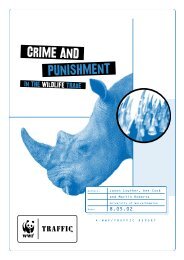Deeper Luxury Report - WWF UK
Deeper Luxury Report - WWF UK
Deeper Luxury Report - WWF UK
You also want an ePaper? Increase the reach of your titles
YUMPU automatically turns print PDFs into web optimized ePapers that Google loves.
Chapter nine<br />
The ten point plan<br />
Brand and marketing professionals on both client and<br />
agency sides can unlock the latent commercial potential<br />
of sustainable luxury brands, provided that they do<br />
so in an authentic and systematic way. This can be a<br />
complex task, but the following guidelines can make<br />
it easier. 138<br />
1. Understand your brand. Conduct a “brand<br />
perception audit” to understand and define your<br />
brand’s true personality as it exists in the minds of<br />
both employees and consumers/customers. Include<br />
environmental and social elements in this and<br />
subsequent tracking studies. Identify the values in<br />
your brand’s traditions, and creatively explore what<br />
they can mean in current global contexts. Consider<br />
the inherent qualities of your product or service to<br />
see how it might affect the environment or society.<br />
2. Understand your consumers and how their<br />
relationship with sustainability and ethics affects<br />
their esteem for your brand. Understand how your<br />
company meets your customers’ needs. Observe<br />
and understand the values, beliefs and lifestyles<br />
of your present and potential customers. Avoid<br />
assumptions about consumers, particularly in<br />
Asia and other emerging markets. Explore locally<br />
appropriate ways to generate consumer insights<br />
into the depth and authenticity of your luxury offering.<br />
3. Get your house in order. Audit and improve your<br />
internal processes, from office management to<br />
production, supply chain, distribution, marketing<br />
and advertising. Minimise power consumption,<br />
water use and waste. Use environmentally-friendly<br />
cleaning products and office supplies. Accept<br />
responsibility for the practices throughout your<br />
supply chain by screening, training and monitoring<br />
the sustainability performance of its constituent<br />
parts. Take guidance on other important issues<br />
from the guidelines of the Global <strong>Report</strong>ing Initiative.<br />
4. C(S)R: Handle with care! Learn from the leading<br />
companies and their latest understanding of<br />
corporate responsibility and sustainability as<br />
drivers for innovation and value creation. Neither<br />
treat philanthropy nor reputation management as<br />
the main concerns of the corporate responsibility<br />
function. Rather than restricting its focus on<br />
measuring and reducing risks and direct impacts,<br />
CSR should draw attention to opportunities. CSR<br />
units should work with the heads of the core business<br />
functions (including product development, sales<br />
and marketing) to develop key performance<br />
indicators (KPIs) of sustainable business practices.<br />
These KPIs should then be used for setting objectives<br />
and targets, reviewing performance and determining<br />
remuneration and career progression. They should<br />
focus on embedding social responsibility and<br />
innovation into corporate and brand DNA.<br />
© iStock / Bora Ucak


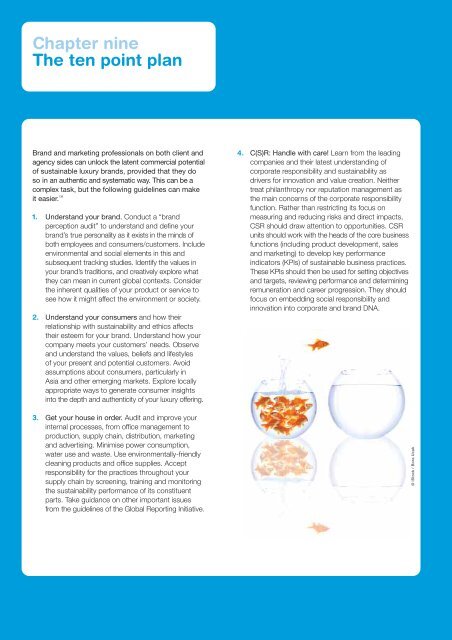

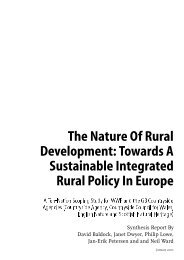
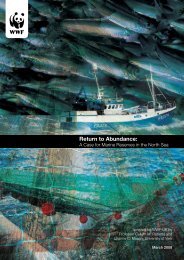
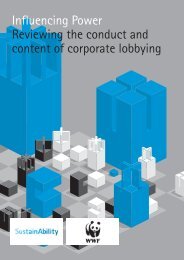



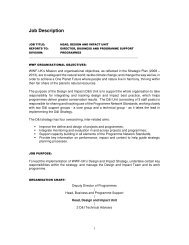

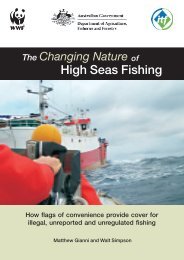

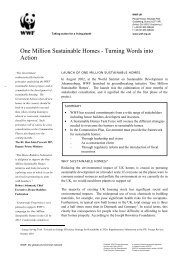
![[PDF] Causes for concern: chemicals and wildlife - WWF UK](https://img.yumpu.com/31929970/1/184x260/pdf-causes-for-concern-chemicals-and-wildlife-wwf-uk.jpg?quality=85)
